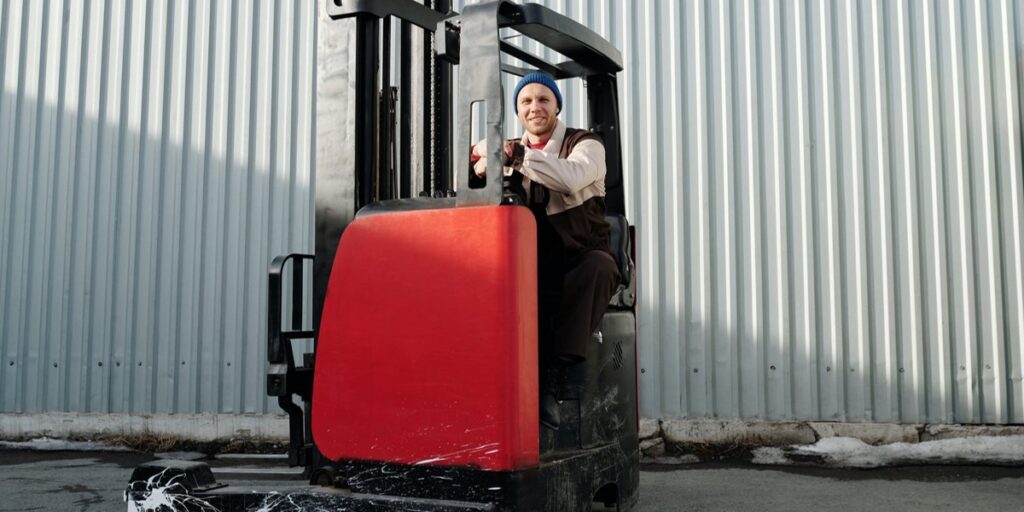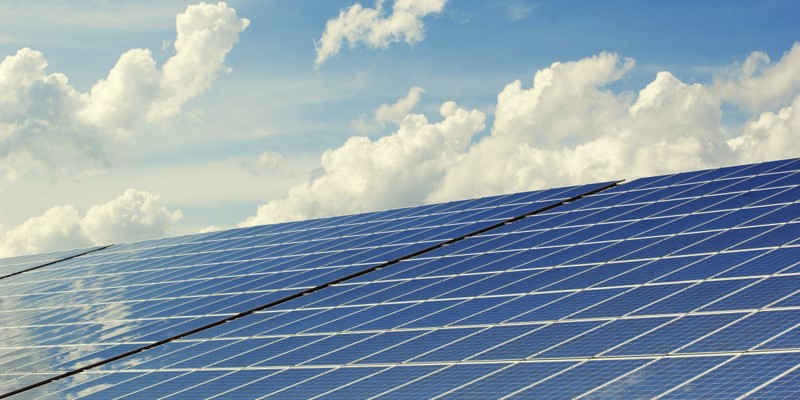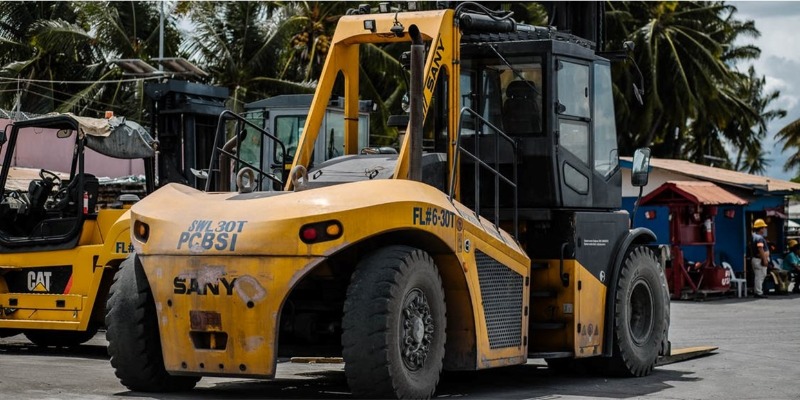Forklift Innovations That Changed the Workplace

Industrial life on worksites and warehouses is constantly adapting with companies always striving to find new ways to make jobs easier and more efficient. Forklift innovations have played a large role in making tricky jobs simple with leading brands often making constant little tweaks to improve performance.
Sometimes, changes can go unnoticed. We have decided to shine a light on the many ways that forklifts have changed over the years, highlighting the innovations they have made in the workplace, as well as taking a look towards the future.
A Brief History of Forklifts
Where better to start looking at forklift innovations than at the very beginning. The very first incarnation of the forklift truck was developed by American engineer Eugene Bradley Clark in 1917. The CLARK Equipment Company created the first forklift to improve efficiency for all manner of construction work. CLARK created a three-wheeled wagon that could carry loads of up to two tons. This ‘Tructractor’ did not have a hydraulic lifting system and this was not developed until CLARK launched their ‘Tructier’ in 1928.
The forklift would become commonplace as the 20th century continued. The start of World War II saw the need for a massive increase in manufacturing and efficiency was paramount for the war effort. As the war continued the massive amounts of materials that were being produced, such as guns and ammunition, meant that transporting them to where they needed to be became difficult; in particular the issue of loading them into trucks or trains arose. Thus, high lift trucks and more lightweight, maneuverable models were designed. These allowed for much-needed materials to be transported quickly and efficiently, and in a small way helped towards the overall war effort.
Following the war forklift innovations did not cease. People had realised how useful they could be and they quickly became a staple of work environments. In the mid-20th century, around the 1960s, safety became more of a concern. Overhead canopies, backrests and armrests became common features on forklifts to ensure that the user was safe and comfortable. However, the changes did not stop there.
Different Forklifts for Different Jobs
Modern forklifts are perhaps the most versatile piece of equipment on a worksite. If you go to many different work settings you are likely to see a forklift. Lift trucks are perhaps most well-known for use in warehouses and building sites, but there are some other settings that people do not think of quite so much; farming and agriculture, retail use and factories to name a few. One of the most important forklift innovations in recent times is the creation of forklifts that can offer more niche uses.
For warehouses, three-wheeled forklifts are often the most popular thanks to their greater turning capabilities, making them perfect for tight warehouse spaces. However, for more agricultural use you may be better off with a four-wheeler that has been specifically designed with stability and heavy-duty usage in mind. New types of forklifts that are available hold a whole host of uses. For example, side loader forklifts provide a whole different dynamic to articulated machines, which in turn offer a different usage to reach lift trucks. For further information about the best forklift trucks for different industries, check out our previous post here.
New Ways of Powering Forklifts

One of the biggest ways that modern forklifts have developed is the ways in which they are powered. As people become more knowledgeable about the benefits of alternative power methods, forklift innovations will follow suit. Alternative methods include electric and gas, as well as the commonly used diesel-powered equipment.
Electric forklifts offer a range of incredible benefits compared to diesel. In short, they are easier to drive and have zero carbon emissions. Emissions created by diesel forklifts can create a dangerous environment in a workplace where the correct ventilation methods have not been put into place. Electric forklifts are easier to drive as they have no clutch. They are usually fitted with an accelerator and a brake, as well as a steering wheel and fork operating mechanism. They also tend to have three wheels, allowing for a much sharper turning circle. For a full overview on the benefits of electric forklifts, click here.
Gas forklifts on the other hand offer an incredibly powerful, easy to maintain alternative. Forklift innovations allowed for these machines to be quickly and simply refueled by replacing gas canisters. LPG (liquified petroleum gas) forklifts are often heavier duty and are used for more rugged use, but they do also provide incredible versatility to all manner of workplaces.
The classic way of powering forklifts is through diesel. Diesel forklifts are tried and tested meaning you can be assured of high-quality, long-lasting lifting power. They are often more cost-effective than alternative means and can be refueled using commonly found diesel.
The Future of Forklifts

But what future forklifts can be expected in the future. Forklift innovations mean that there will no doubt be a completely new set of machines that have been designed to complete tasks that may not have even been thought of yet.
As with all manner of different products, forklifts will no doubt become smarter. Self-driving technology in cars could make its way over to the industrial world. Sometime in the future, you may not even need to operate a lift truck yourself, simply input what you need lifting and where it needs to go and let the machine do the rest.
Whilst some people may wish to continue to operate forklifts themselves, safety measures will also be a means of innovation for future forklifts. One future technology that is being discussed in the industrial world is the introduction of auto-stop, sensor-based systems that will completely cut off the struck if a potential collision is detected.
Perhaps the most surefire innovation that is sure to benefit the world of industrial forklifts is improving the alternative power technology. Future engines will be even more efficient than they are today with improvements to batteries, much like the cars of the future from companies such as Tesla. As well as this, charging methods will also increase in efficiency with the introduction of superchargers and dedicated power points.
If you would like to browse our amazing range of modern forklifts, check out our stock here. Additionally, if you have any questions about forklift innovations, our team would be happy to help. Get in touch with us today to discover more!
